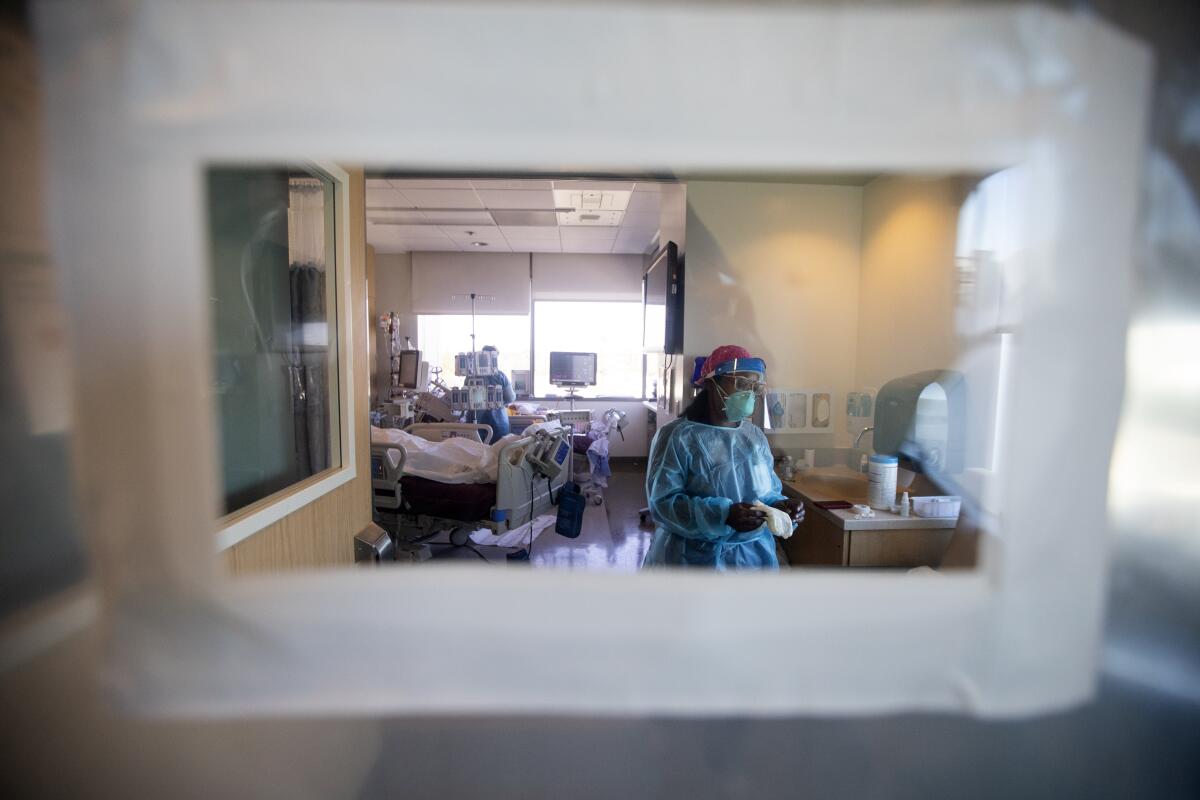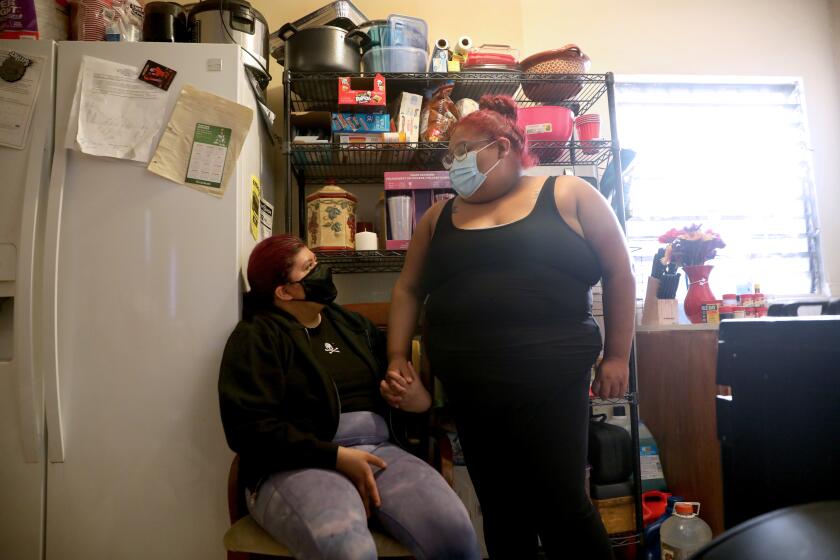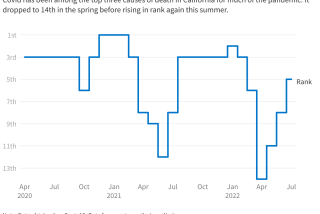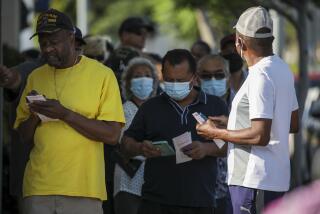California COVID-19 deaths top 40,000 — or 1 out of every 1,000 residents

- Share via
One out of every 1,000 Californians has now died of COVID-19.
California on Friday exceeded 40,000 coronavirus deaths, another milestone that comes as the state is coming out of a winter surge.
More than half — at least 22,500 Californians — have died of COVID-19 since Nov. 1, out of a cumulative death toll of more than 40,100.
Only New York has suffered more total coronavirus-related deaths than California. California — the nation’s most populous state — has recorded roughly 101 deaths per 100,000 residents, the 36th-highest COVID-19 cumulative death rate among the 50 states and the District of Columbia.
Many other large states have higher per capita deaths including New York, New Jersey, Texas and Florida, according to The Times tracker. New Jersey, New York, Massachusetts, South Dakota and Rhode Island have double the death rate of California.
Still, the loss of life is hard to fully take in. The death toll exceeds the total population of Culver City or West Hollywood.
While there are hopeful signs that the worst wave of the pandemic has crested, officials say they expect the death toll will continue to grow significantly in the days to come as more victims of the latest surge lose their battle with COVID-19.
“We have a way to go before our hospitals are not stressed and fewer people die each day,” Los Angeles County Public Health Director Barbara Ferrer said.
In Los Angeles County, there is little mystery to the heaviest spread of the coronavirus. Where crowded housing is worst, the COVID-19 pandemic hits hardest.
Over the last week, an average of 539 Californians have died of COVID-19 every day — one of the highest rates in the pandemic, according to data compiled by The Times.
The death toll among Los Angeles County’s Latino residents is nearly triple that of white residents, data show.
While other important COVID-19 metrics, such as newly confirmed infections and how many people are hospitalized with the disease, have tumbled in recent weeks, the number of Californians dying each day has remained at, or near, highs.
That’s to be expected, experts say, as fatalities represent the final phase of COVID-19’s weeks-long ravage.
While many people who are infected with the coronavirus may experience only mild symptoms, or none at all, a portion — health officials estimated between 10% and 12% — will eventually become sick enough to require hospital-level care, usually about two weeks later. And though some will eventually be discharged, others will continue to deteriorate over a period of days or weeks.
Because of this, there’s a persistent lag in how long it takes for spikes in new infections to be fully reflected in the COVID-19 death count. That’s why, even as California sees progress elsewhere, officials warn the death toll will likely remain elevated in the near future.
“We expect average daily mortality to continue to be very high,” said Dr. Christina Ghaly, the L.A. County director of health services.
But, she added earlier this week, that toll “will begin to decline, thankfully, in the next one to two weeks if transmission behavior remains the same.”
While virtually no part of the state has escaped, the pandemic has been particularly devastating in Los Angeles County. More than 16,000 L.A. County residents have died from COVID-19 — representing roughly 40% of California’s total coronavirus-related fatalities, even though L.A. County accounts for only about one-fourth of the state’s population.
California’s recent progress, though, is promising — and paints a tantalizing picture of better days ahead.
The seven-day rolling average of new coronavirus cases statewide fell to 22,200 as of Thursday, roughly half what it was two weeks ago. Hospitalizations have tumbled too — from about 21,000 two weeks ago to 15,705 on Thursday, according to the latest state data.
All the metrics move in concert. Fewer infections on the front end means fewer people needing higher levels of care, or worsening to the point of death in the days and weeks to follow.
Because of that, officials and experts say it remains vital for residents to keep their guard up and not allow coronavirus transmission to rebound.
Steps like wearing masks in public, practicing good hand hygiene and keeping physical distance from those you don’t live with can help keep California on the right path and are especially important, officials say, as the state reopens shuttered sectors of its battered economy.
“To continue to drive down transmission, we all must commit to taking the actions that work to slow COVID-19 spread,” Ferrer said in a statement. “When more sectors reopen, the risk of COVID-19 transmission increases because people are interacting more with nonhousehold members. In order to avoid reopenings resulting in increases in cases, businesses and individuals need to be more diligent, not less, in following public health measures.”
More to Read
Sign up for Essential California
The most important California stories and recommendations in your inbox every morning.
You may occasionally receive promotional content from the Los Angeles Times.















